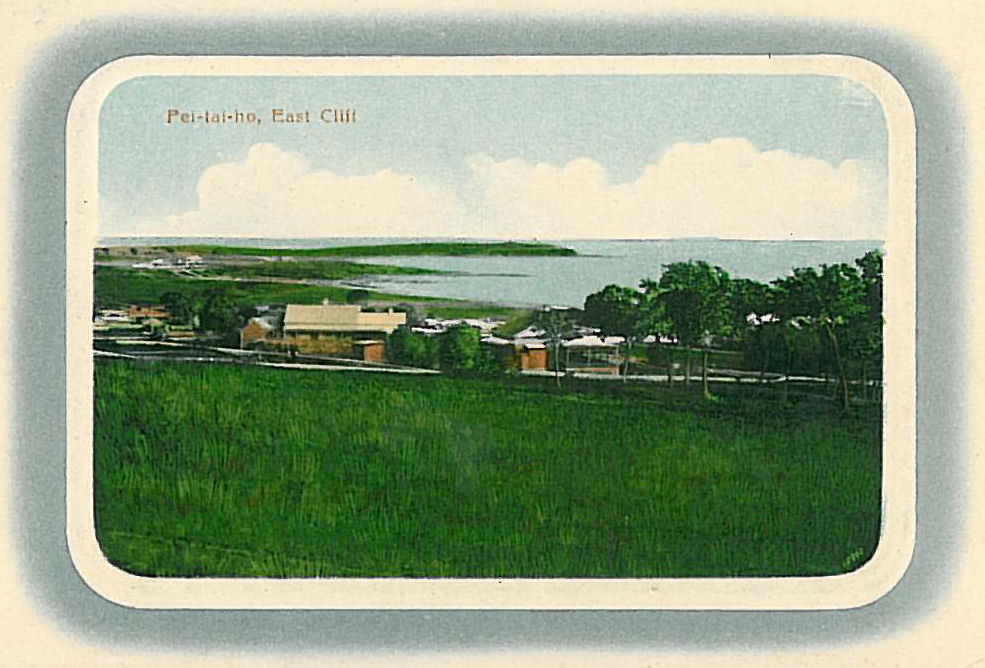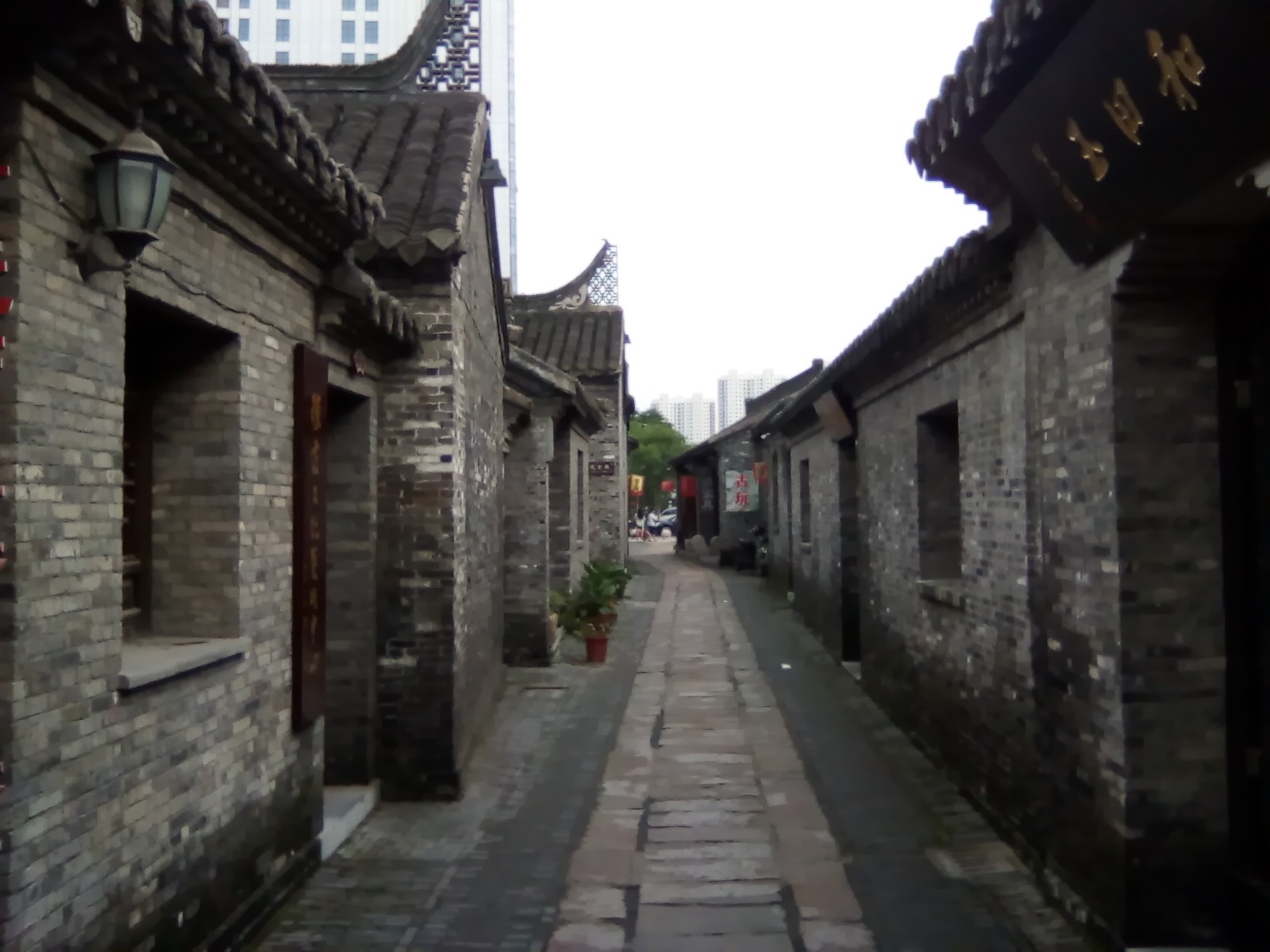|
Beidaihe
Beidaihe District () is a popular beach resort and a district of the city of Qinhuangdao, Hebei province on China's Bohai Sea coast. It has an area of and, , a population of 66,000, as well as a coastline of . It is also known as a birding haven. The Beidaihe Beach Resort stretches from east to west, from the Yinjiao Pavilion to the mouth of the Daihe river. The beach itself is covered with fine yellow sand stretching some 100 meters to the sea. The water is shallow. Mount Lianfeng near the beach has two peaks covered by abundant green pines and cypresses. Lush vegetation, caves, decorated pavilions, secluded paths and winding bridges have made it attractive to visitors from throughout China. English railway engineers were the first Europeans to discover the fishing village in the 1890s and it was not long before wealthy Chinese and foreign diplomats from Beijing and Tianjin made the village a popular destination. Use by Communist Party Because of its proximity to the capi ... [...More Info...] [...Related Items...] OR: [Wikipedia] [Google] [Baidu] |
Qinhuangdao
Qinhuangdao (; ) is a port city on the coast of China in northern Hebei. It is administratively a prefecture-level city, about east of Beijing, on the Bohai Sea, the innermost gulf of the Yellow Sea. Its population during the 2020 national census was 3,136,879, with 1,881,047 people living in the built-up (or 'metro') area made up of 4 urban districts. History The city's name "''Qinhuangdao''" literally means " Qin Emperor island", and is allegedly originated from the legend that the Jieshishan Scenic Area in Changli County was the site of First Emperor of Qin's famous ritual during his fourth and final survey tour to the east (东巡) in 210 BC. The "island" refers to the Nanshan area of the Port of Qinhuangdao at the southern edge of the city's Haigang District, which used to be a small offshore island until the late Qing dynasty, when dumping of dredged silt joined it to the mainland after the Guangxu Emperor approved the port's construction in the late 19th century. In ... [...More Info...] [...Related Items...] OR: [Wikipedia] [Google] [Baidu] |
Hebei
Hebei or , (; alternately Hopeh) is a northern province of China. Hebei is China's sixth most populous province, with over 75 million people. Shijiazhuang is the capital city. The province is 96% Han Chinese, 3% Manchu, 0.8% Hui, and 0.3% Mongol. Three Mandarin dialects are spoken: Jilu Mandarin, Beijing Mandarin and Jin. Hebei borders the provinces of Shanxi to the west, Henan to the south, Shandong to the southeast, Liaoning to the northeast, and the Inner Mongolia Autonomous Region to the north. Its economy is based on agriculture and manufacturing. The province is China's premier steel producer, although the steel industry creates serious air pollution. Five UNESCO World Heritage Sites can be found in the province, the: Great Wall of China, Chengde Mountain Resort, Grand Canal, Eastern Qing tombs, and Western Qing tombs. It is also home to five National Famous Historical and Cultural Cities: Handan, Baoding, Chengde, Zhengding and Shanhaiguan. Historic ... [...More Info...] [...Related Items...] OR: [Wikipedia] [Google] [Baidu] |
Lin Biao
) , serviceyears = 1925–1971 , branch = People's Liberation Army , rank = Marshal of the People's Republic of China Lieutenant general of the National Revolutionary Army, Republic of China , commands = 1st Corps 1st Red Army Corps, Chinese Red Army 115 Division, 8th Route Army People's Liberation Army Lin Biao (Chinese: 林彪; 5 December 1907 – 13 September 1971) was a Chinese politician and Marshal of the People's Republic of China who was pivotal in the Communist victory during the Chinese Civil War, especially in Northeast China from 1946 to 1949. Lin was the general who commanded the decisive Liaoshen and Pingjin Campaigns, in which he co-led the Manchurian Field Army to victory and led the People's Liberation Army into Beijing. He crossed the Yangtze River in 1949, decisively defeated the Kuomintang and took control of the coastal provinces in Southeast China. He ranked third among the Ten Marshals. Zhu ... [...More Info...] [...Related Items...] OR: [Wikipedia] [Google] [Baidu] |
Hu Jintao
Hu Jintao (born 21 December 1942) is a Chinese politician who served as the 16–17th general secretary of the Chinese Communist Party (CCP) from 2002 to 2012, the 6th president of the People's Republic of China (PRC) from 2003 to 2013, and chairman of the Central Military Commission (CMC) from 2004 to 2012. He was a member of the CCP Politburo Standing Committee, China's ''de facto'' top decision-making body, from 1992 to 2012. Hu was the paramount leader of China from 2002 to 2012. Hu rose to power through the Chinese Communist Party (CCP), notably as Party Committee secretary for Guizhou province and the Tibet Autonomous Region, where his harsh repression of dissent gained him attention from the highest levels. He moved up to first secretary of the CCP Central Secretariat and vice president under CCP general secretary Jiang Zemin. Hu was the first leader of the Communist Party from a generation younger than those who participated in the civil war and the founding of ... [...More Info...] [...Related Items...] OR: [Wikipedia] [Google] [Baidu] |
District (PRC)
The term ''district'', in the context of China, is used to refer to several unrelated political divisions in both ancient and modern China. In the modern context, district (), formally city-governed district, city-controlled district, or municipal district (), are subdivisions of a municipality or a prefecture-level city. The rank of a district derives from the rank of its city. Districts of a municipality are prefecture-level; districts of a sub-provincial city are sub-prefecture-level; and districts of a prefecture-level city are county-level. The term was also formerly used to refer to obsolete county-controlled districts (also known as district public office). However, if the word ''district'' is encountered in the context of ancient Chinese history, then it is a translation for ''xian'', another type of administrative division in China. Before the 1980s, cities in China were administrative divisions containing mostly urban, built-up areas, with very little farmland ... [...More Info...] [...Related Items...] OR: [Wikipedia] [Google] [Baidu] |
Time (magazine)
''Time'' (stylized in all caps) is an American news magazine based in New York City. For nearly a century, it was published Weekly newspaper, weekly, but starting in March 2020 it transitioned to every other week. It was first published in New York City on March 3, 1923, and for many years it was run by its influential co-founder, Henry Luce. A European edition (''Time Europe'', formerly known as ''Time Atlantic'') is published in London and also covers the Middle East, Africa, and, since 2003, Latin America. An Asian edition (''Time Asia'') is based in Hong Kong. The South Pacific edition, which covers Australia, New Zealand, and the Pacific Islands, is based in Sydney. Since 2018, ''Time'' has been published by Time USA, LLC, owned by Marc Benioff, who acquired it from Meredith Corporation. History ''Time'' has been based in New York City since its first issue published on March 3, 1923, by Briton Hadden and Henry Luce. It was the first weekly news magazine in the United St ... [...More Info...] [...Related Items...] OR: [Wikipedia] [Google] [Baidu] |
Dongshan Subdistrict, Qinhuangdao
Dongshan (Wade–Giles: Tung-shan; generally ) may refer to: Places *Dongshan County, Fujian *Dongshan District, Hegang, Heilongjiang *Tung Shan (mountain), Hong Kong *Dongshan District, Tainan, Taiwan *, a subdistrict of Yuhua District, Changsha, Hunan *, a town in Huarong County, Hunan *, a Dong ethnic township in Suining County, Hunan *Dongshan, Yilan (), township of Yilan County, Taiwan Former districts *Dongshan District, Guangzhou, Guangdong *Dongshan District, Ürümqi, Xinjiang People *Dongshan Liangjie (), a 9th-century Chinese Chan teacher *Dongshan Shouchu (), a 10th-century Chinese Chan teacher See also * Shandong (other) * Dong (other) * Shan (other) Shan may refer to: People *Shan (surname), or 单 in Chinese, a Chinese surname *Shan, a variant of the Welsh given name usually spelled Siân *Occasionally used as a short form of Shannen/Shannon (given name), Shannon Ethnic groups *Shan peopl ... * Tung Shan (other) ... [...More Info...] [...Related Items...] OR: [Wikipedia] [Google] [Baidu] |
The New York Times
''The New York Times'' (''the Times'', ''NYT'', or the Gray Lady) is a daily newspaper based in New York City with a worldwide readership reported in 2020 to comprise a declining 840,000 paid print subscribers, and a growing 6 million paid digital subscribers. It also is a producer of popular podcasts such as '' The Daily''. Founded in 1851 by Henry Jarvis Raymond and George Jones, it was initially published by Raymond, Jones & Company. The ''Times'' has won 132 Pulitzer Prizes, the most of any newspaper, and has long been regarded as a national " newspaper of record". For print it is ranked 18th in the world by circulation and 3rd in the U.S. The paper is owned by the New York Times Company, which is publicly traded. It has been governed by the Sulzberger family since 1896, through a dual-class share structure after its shares became publicly traded. A. G. Sulzberger, the paper's publisher and the company's chairman, is the fifth generation of the family to head the pa ... [...More Info...] [...Related Items...] OR: [Wikipedia] [Google] [Baidu] |






.png)